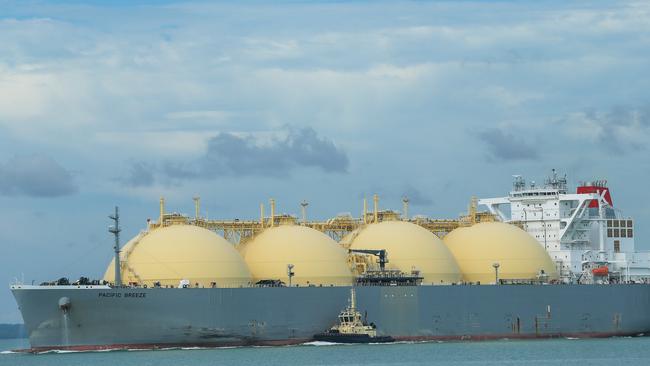Cloud over Australian LNG import terminals after US pause
The prospect of an LNG import terminal on Australia’s east coast has been weakened by moves by the US to pause developments, citing concerns about domestic supplies.

The prospect of an LNG import terminal on Australia’s east coast has been weakened by moves by the US to pause developments, citing concerns about domestic supplies.
The unexpected US action, which former US president Donald Trump has vowed to reverse if elected in November, threatens to up-end global LNG trade and disrupt plans from the likes of Andrew Forrest.
US President Joe Biden said the pause on awarding new licences to proposed LNG terminals would allow a thorough review and public consultation, an announcement cheered by environmentalists.
“During this period, we will take a hard look at the impacts of LNG exports on energy costs, America’s energy security and our environment,” Mr Biden said in a statement.
The previous review of LNG export projects was in 2018, when export capacity was 4 billion cubic feet per day. That capacity has tripled and is set to increase by 2030 with projects under construction.
The growth has set off protests from environmentalists and youth groups, part of Mr Biden’s base. Activists say new LNG projects can harm local communities with pollution, lock in global reliance on fossil fuels for decades, and lead to emissions from burning gas and from leaks of the powerful greenhouse gas methane.
Analysts said the move would lower gas prices in the US, which would probably aid Mr Biden’s re-election prospects, but would force European buyers to seek alternative supplies.
Europe is reliant on LNG for much of its energy needs, particularly in winter, and has been forced to seek new supply agreements after Russia’s invasion of Ukraine resulted in the bloc imposing sanctions on Moscow.
While the increased demand will be a benefit to Australian exporters, Josh Stabler, managing director of Energy Edge, said it would dent the appeal of LNG import terminals that had been earmarked as a solution to Australia’s looming east coast shortfall.
“International gas prices are likely to be slightly higher, which benefits incumbent LNG exporters including Queensland and WA existing assets, especially spot sales,” Mr Stabler said.
“High international gas prices will hurt the business case for southeast Australian LNG import facilities.”
Australian officials are struggling to safeguard domestic supplies, despite the country being one of the world’s largest LNG exporters. Pressure on the east coast market is expected to be exacerbated as supplies from traditional sources run down.
ExxonMobil – one of Australia’s largest producers of domestic gas – this year said gas from its Gippsland Basin joint venture, which historically supplied more than 70 per cent of southeast Australia’s domestic gas demand, was rapidly dwindling.
The structural deficit leaves the east coast facing an uncertain future. New developments have been curtailed in NSW and Victoria, while new pipelines would be needed to unlock potential supplies in Queensland and the Northern Territory, which could be prohibitively expensive and require significant local support.
The Australian Energy Market Operator has said urgent investment is needed, but projects have been stalled by community opposition, legal rulings and regulatory uncertainty.
LNG import terminal proponents have said the issue could be resolved by constructing facilities that can import gas from the US or Qatar, the world’s two largest exporters.
Dr Forrest’s Squadron Energy is pushing ahead and is developing Australia’s most advanced LNG import terminal in Port Kembla. The terminal is under construction, is looking for customers and has sounded out the market over the past few months, although potential buyers insist it is uncompetitively priced.
Other developments in the works include Venice Energy, which late last year signed early stage agreements with Origin Energy that could see Australia’s largest electricity and gas retailer finance development in exchange for an exclusive use of the facility.
Other solutions could include developing new gas in the NT, which could then be piped down to Australia’s east coast.
Tamboran Resources and APA Group have entered into an early development agreement to build a gas pipeline from the Beetaloo Basin in the Northern Territory to Australia’s east coast, with a target for first deliveries in 2028.





